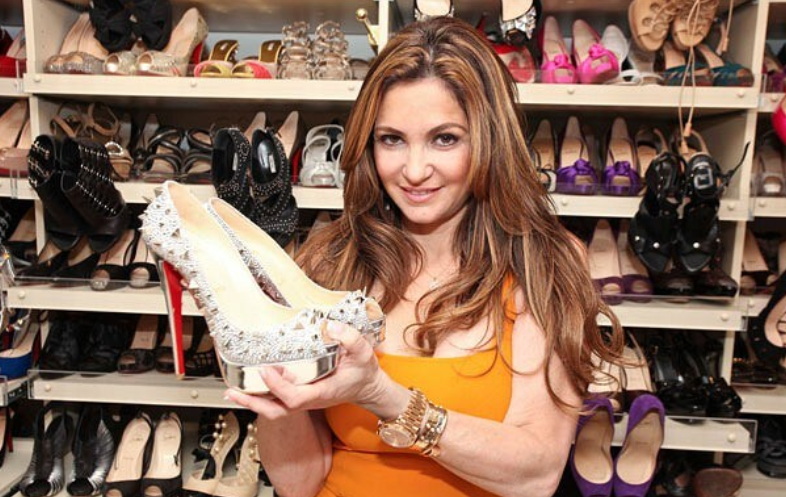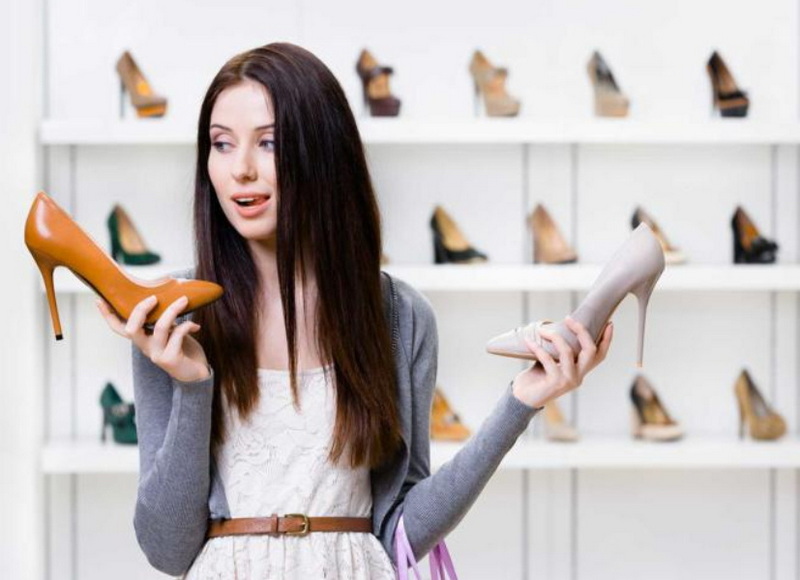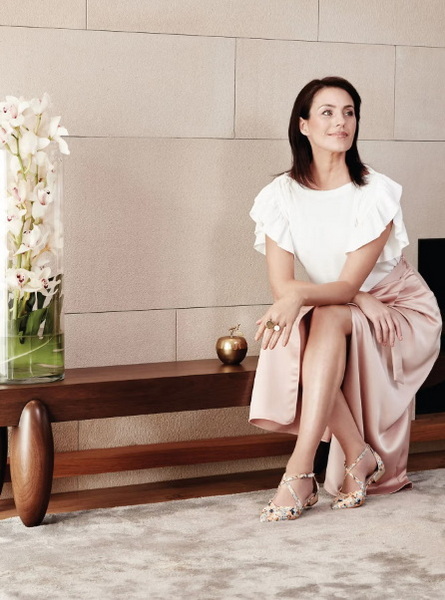Content Menu
● The Cultural Significance of Shoes
>> Historical Perspective
● Psychological Factors
>> 1. Emotional Connection
>> 2. Self-Expression
>> 3. The Power of Choice
● Social Influences
>> 1. Fashion Trends
>> 2. Peer Influence
>> 3. Celebrity Culture
● Practical Considerations
>> 1. Variety for Different Occasions
>> 2. Comfort and Fit
● The Impact of Marketing
>> 1. Targeted Advertising
>> 2. Sales Promotions
● The Role of Online Shopping
>> 1. Convenience
>> 2. Wider Selection
● The Emotional Appeal of Shoe Shopping
>> 1. Retail Therapy
>> 2. Celebration and Reward
● Conclusion
● FAQ
>> 1. Why do some women feel they need so many pairs of shoes?
>> 2. How do fashion trends influence women's shoe collections?
>> 3. What role does celebrity culture play in women's shoe purchases?
>> 4. How does online shopping affect women's shoe buying habits?
>> 5. Are there specific types of shoes that women tend to collect more than others?
The fascination with shoes is a phenomenon that transcends cultures and generations, particularly among women. From stilettos to sneakers, the diversity in footwear styles has led many to wonder why women tend to have such extensive shoe collections. This article delves into the psychological, social, and practical reasons behind this trend, exploring the cultural significance of shoes and their role in women's lives.

The Cultural Significance of Shoes
Shoes have been an essential part of human civilization for centuries. They serve not only a functional purpose but also a symbolic one. In many cultures, shoes represent status, identity, and personal expression. For women, shoes can be a way to showcase individuality and style.
Historical Perspective
Historically, shoes have evolved significantly. In ancient times, footwear was primarily functional, designed to protect the feet. However, as societies progressed, shoes began to symbolize wealth and class. High-heeled shoes emerged in the 16th century as a status symbol among aristocrats. This historical context lays the groundwork for understanding why women today often feel compelled to own multiple pairs of shoes.
In different cultures, shoes have held various meanings. For instance, in some Asian cultures, specific types of footwear are worn during traditional ceremonies, highlighting their importance beyond mere fashion. Similarly, in Western societies, the evolution of shoe design reflects changing attitudes toward femininity and empowerment.
Psychological Factors
Several psychological factors contribute to women's affinity for shoes:
1. Emotional Connection
Many women develop emotional attachments to their shoes. A pair might remind them of a special occasion or evoke memories of a particular time in their lives. This emotional connection can lead to an accumulation of shoes over time.
For example, a woman might keep her wedding shoes as a cherished reminder of her special day or hold onto a pair that she wore during a significant life event. These emotional ties can make it difficult to part with certain pairs, even if they are no longer worn regularly.
2. Self-Expression
Shoes are a powerful form of self-expression. Just as clothing choices reflect personality, so do footwear selections. Women often choose shoes that align with their mood or the image they wish to project.
A bold pair of red heels might signify confidence and assertiveness, while comfortable flats may indicate a more laid-back or practical approach to daily life. This ability to express oneself through footwear can be particularly appealing in a world where personal branding is increasingly important.
3. The Power of Choice
Having multiple pairs of shoes provides women with options, allowing them to adapt their style to different occasions. This sense of choice can be empowering and contributes to feelings of confidence.
The ability to select the perfect pair for any given situation—from professional settings to casual outings—can enhance a woman's self-esteem and overall sense of style.
Social Influences
Social factors also play a significant role in why women accumulate so many pairs of shoes:
1. Fashion Trends
The fashion industry constantly introduces new styles and trends, encouraging women to update their wardrobes regularly. Social media platforms like Instagram and Pinterest further amplify these trends, making it easy for women to discover and desire new footwear options.
Fashion weeks around the world showcase innovative designs that often become must-haves for fashion enthusiasts. The rapid pace at which trends change can create a sense of urgency among consumers to keep up with the latest styles.
2. Peer Influence
Women often find themselves influenced by their peers when it comes to fashion choices. The desire to fit in or stand out can lead to purchasing decisions that result in larger shoe collections.
Group dynamics play a significant role here; if friends are discussing or showcasing new shoe purchases, it can spark interest and motivation for others to expand their own collections.
3. Celebrity Culture
Celebrities frequently showcase extravagant shoe collections, setting trends that many women aspire to emulate. The allure of owning similar styles can drive women to acquire more footwear than they may need.
Social media platforms allow celebrities to share their fashion choices directly with fans, creating an aspirational culture where followers seek out similar looks. This phenomenon is further amplified by influencers who curate content around specific brands or styles.

Practical Considerations
While emotional and social factors are significant, practical considerations also influence shoe purchases:
1. Variety for Different Occasions
Women often need different types of shoes for various activities—work, casual outings, formal events, exercise, etc. This necessity can lead to a diverse collection that caters to all aspects of life.
For instance:
- Work Shoes: Professional settings often require more formal footwear like pumps or loafers.
- Casual Shoes: Sneakers or sandals are popular for everyday wear.
- Formal Shoes: Elegant heels are typically chosen for special occasions like weddings or parties.
- Athletic Shoes: Many women invest in quality athletic footwear for workouts and outdoor activities.
This variety ensures that women are prepared for any situation while allowing them to express their style across different contexts.
2. Comfort and Fit
As women age or experience changes in their bodies, comfort becomes increasingly important in footwear choices. This can lead them to seek out multiple pairs that provide varying levels of support and comfort.
Footwear technology has advanced significantly over the years; brands now offer options designed specifically for comfort without sacrificing style. As such, many women find themselves accumulating shoes that cater specifically to comfort needs alongside aesthetic preferences.
The Impact of Marketing
Marketing strategies play a crucial role in shaping consumer behavior:
1. Targeted Advertising
Brands often target women with advertisements that emphasize the importance of having the right pair of shoes for every occasion. This marketing approach can create a sense of urgency and desire for new purchases.
Advertisers utilize emotional appeals by showcasing relatable scenarios where specific types of footwear enhance experiences—be it attending a glamorous event or enjoying a day out with friends.
2. Sales Promotions
Sales events like Black Friday or seasonal sales encourage impulse buying, leading women to add more shoes to their collections than they initially planned.
Limited-time offers create urgency; consumers may feel pressured to purchase items before they sell out or before the sale ends, leading them to buy more than they intended.
The Role of Online Shopping
The rise of e-commerce has transformed how women shop for shoes:
1. Convenience
Online shopping offers unparalleled convenience, allowing women to browse and purchase shoes from the comfort of their homes without the pressure of salespeople.
With just a few clicks, shoppers can compare prices across multiple retailers and read reviews from other customers before making decisions—further enhancing the shopping experience.
2. Wider Selection
E-commerce platforms provide access to a broader range of styles and brands than traditional brick-and-mortar stores, making it easier for women to find exactly what they want.
This accessibility allows consumers from various geographical locations access to global brands that may not be available locally—encouraging them to explore diverse options that align with personal tastes.
The Emotional Appeal of Shoe Shopping
Shoe shopping can also serve as an emotional outlet for many women:
1. Retail Therapy
The concept of "retail therapy" suggests that shopping can provide temporary relief from stress or negative emotions. For some women, purchasing new shoes offers an instant mood boost—a small treat that brings joy amidst life's challenges.
This emotional aspect reinforces the idea that shoe collections can serve as more than just functional items; they become sources of happiness and fulfillment during tough times.
2. Celebration and Reward
Many women celebrate milestones—such as promotions at work or personal achievements—by treating themselves to new pairs of shoes as rewards for hard work or perseverance.
This practice not only reinforces positive behavior but also creates lasting memories associated with specific pairs—further deepening emotional connections with their footwear collections.
Conclusion
The reasons behind why women have so many shoes are multifaceted—encompassing cultural significance, psychological factors, social influences, practical considerations, marketing strategies, and the convenience offered by online shopping. Shoes are not just functional items; they are symbols of identity and self-expression that play an integral role in women's lives.
As society continues evolving, so too will the relationship between women and their footwear collections. Understanding this dynamic provides insight into broader themes related to consumer behavior and personal identity while highlighting how deeply intertwined our choices are with our emotions and social contexts.

FAQ
1. Why do some women feel they need so many pairs of shoes?
Many women feel the need for multiple pairs due to emotional connections with certain styles, the desire for self-expression through fashion choices, and the practicality required for different occasions.
2. How do fashion trends influence women's shoe collections?
Fashion trends introduced by designers and popularized by social media encourage women to update their wardrobes regularly, leading them to acquire new footwear that aligns with current styles.
3. What role does celebrity culture play in women's shoe purchases?
Celebrities often set trends that many women aspire to emulate; seeing celebrities showcase specific styles can drive interest and desire for similar footwear among fans.
4. How does online shopping affect women's shoe buying habits?
Online shopping provides convenience and access to a wider selection of styles than traditional stores, making it easier for women to purchase multiple pairs without pressure or limitations.
5. Are there specific types of shoes that women tend to collect more than others?
While preferences vary widely among individuals, many women tend to collect heels for formal occasions, sneakers for casual wear, and boots for seasonal changes due to their versatility across different settings.

















